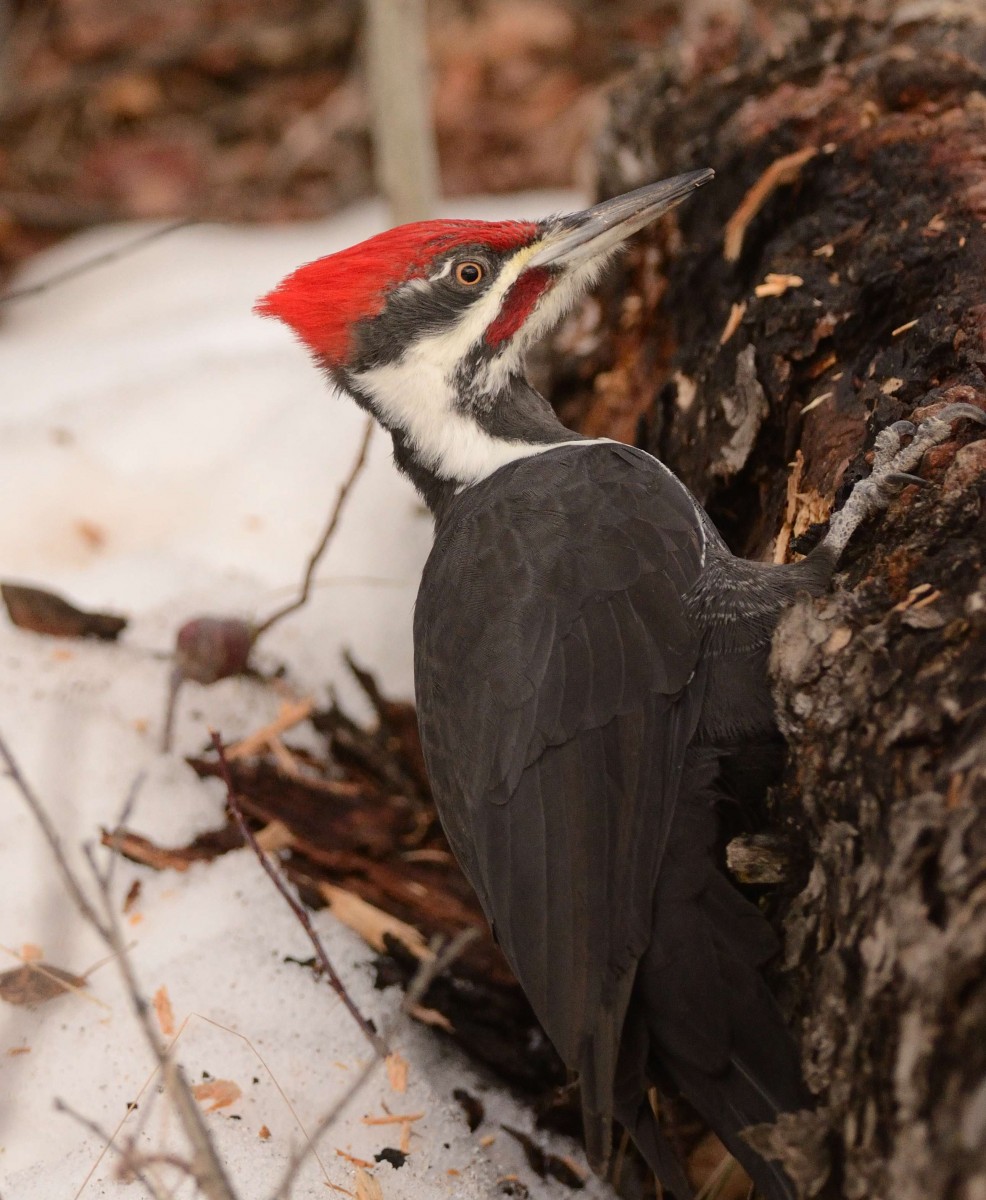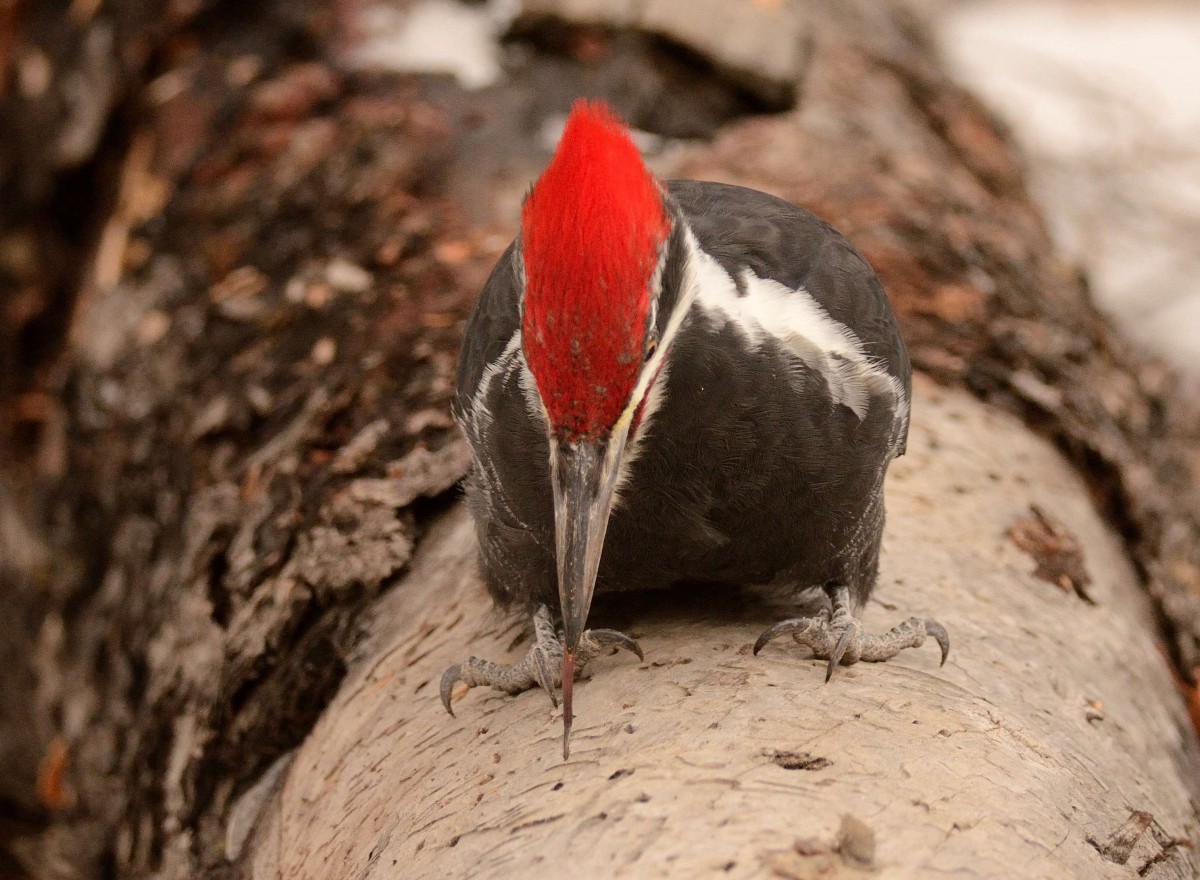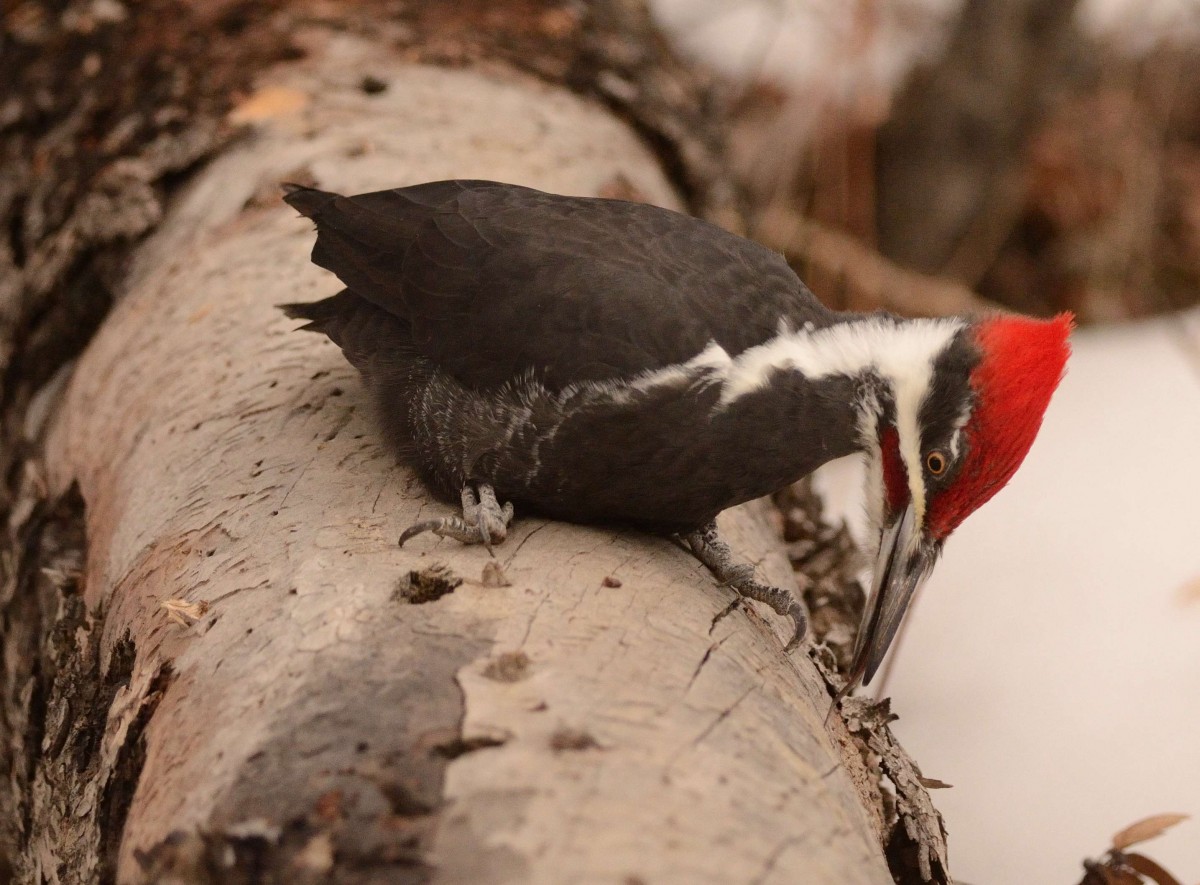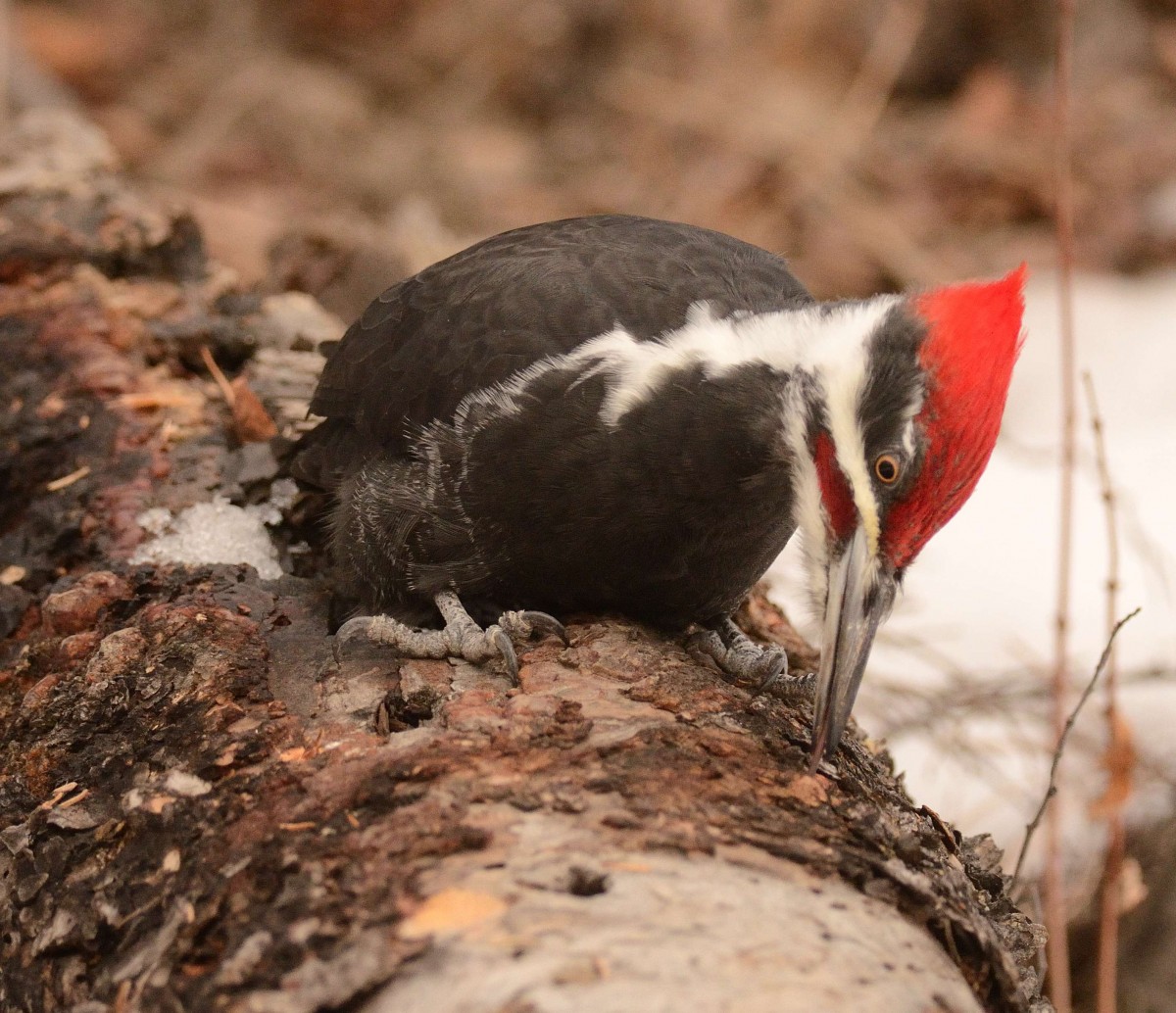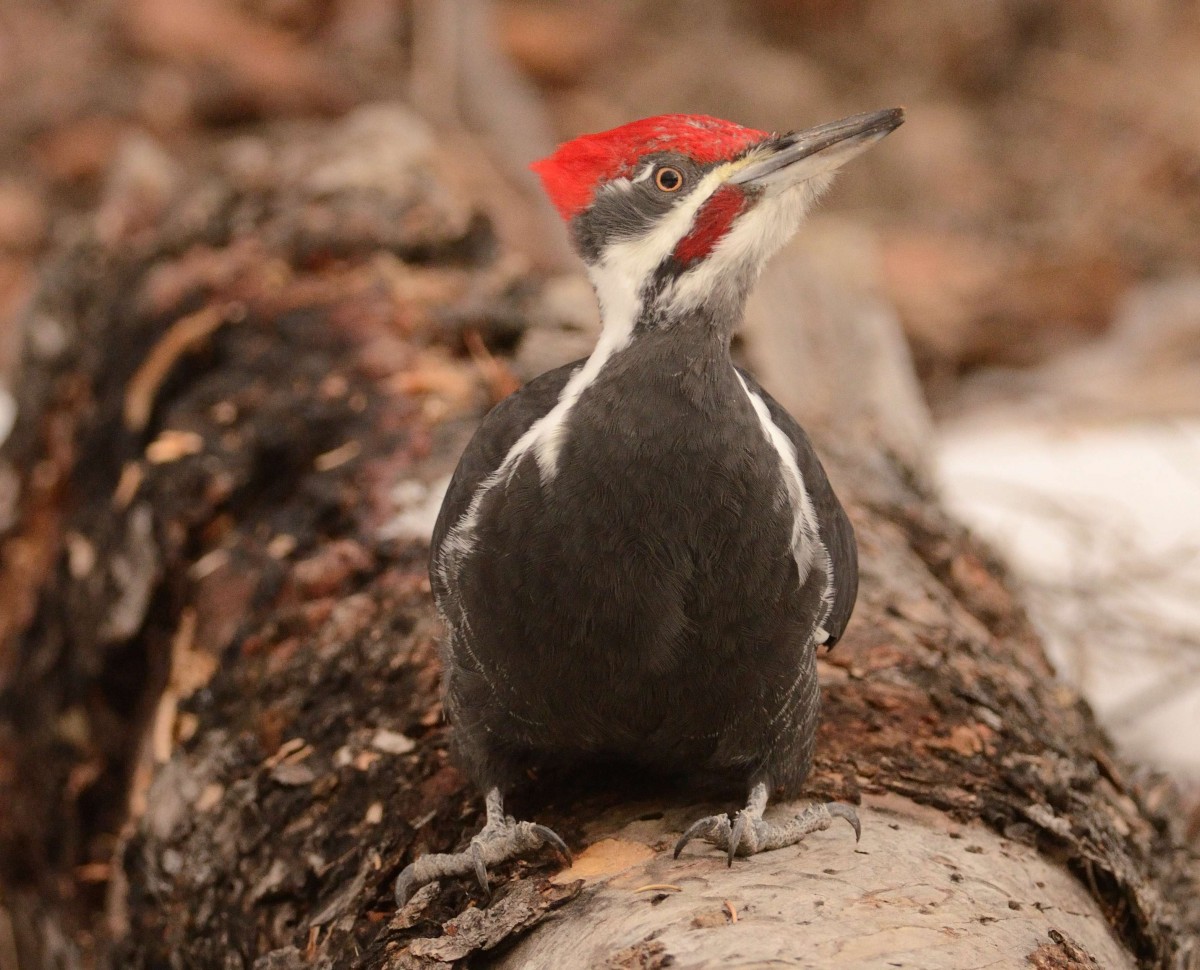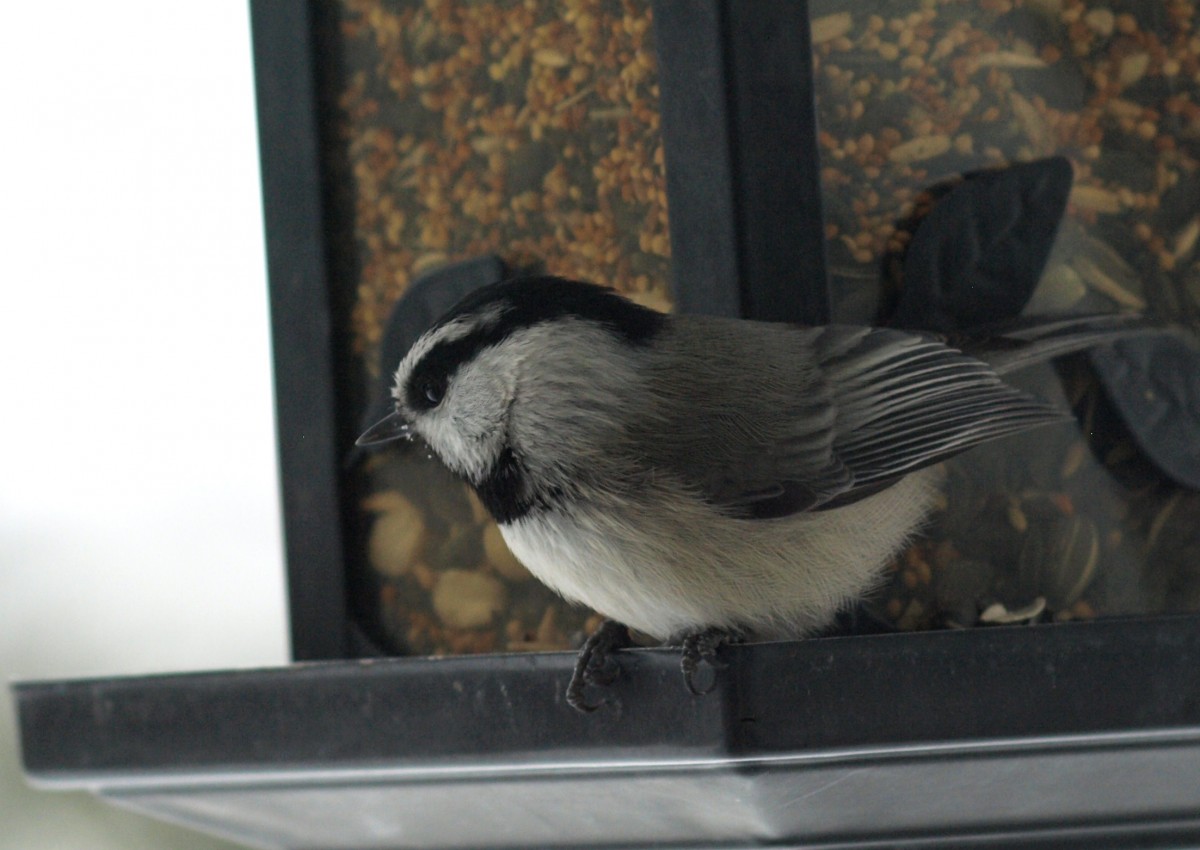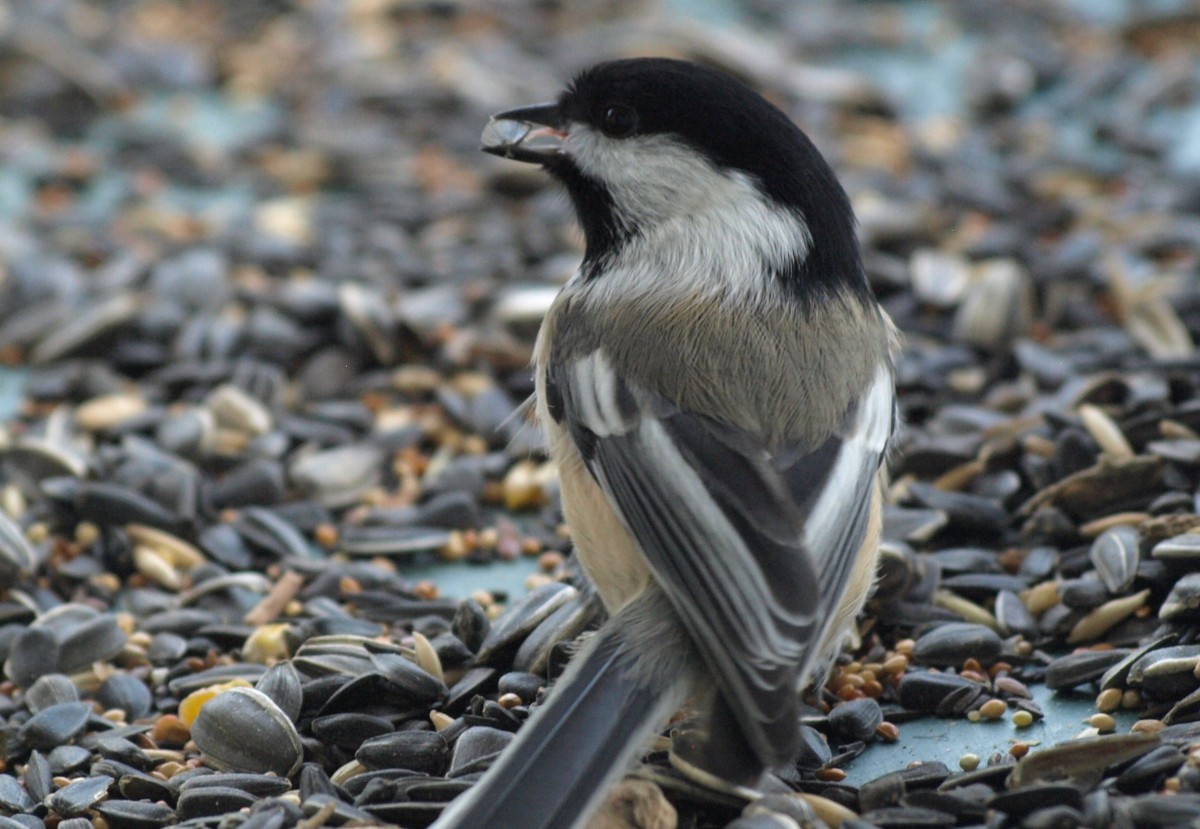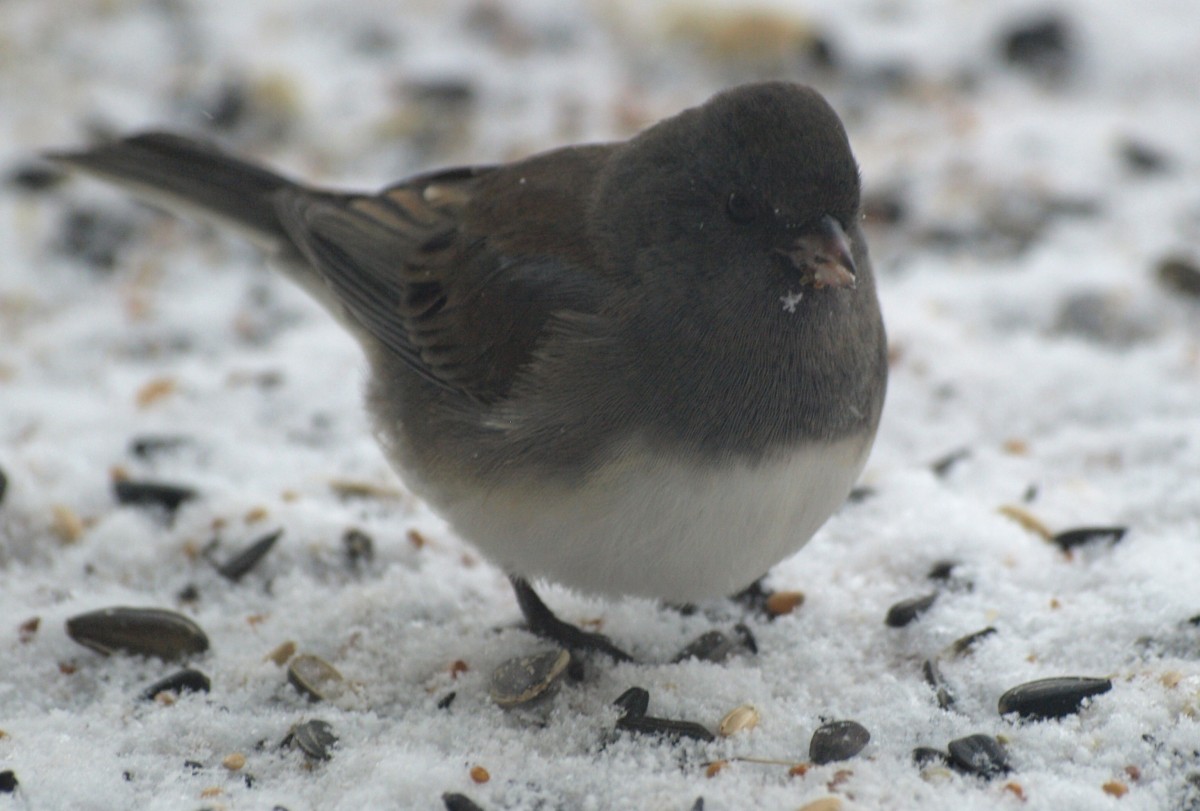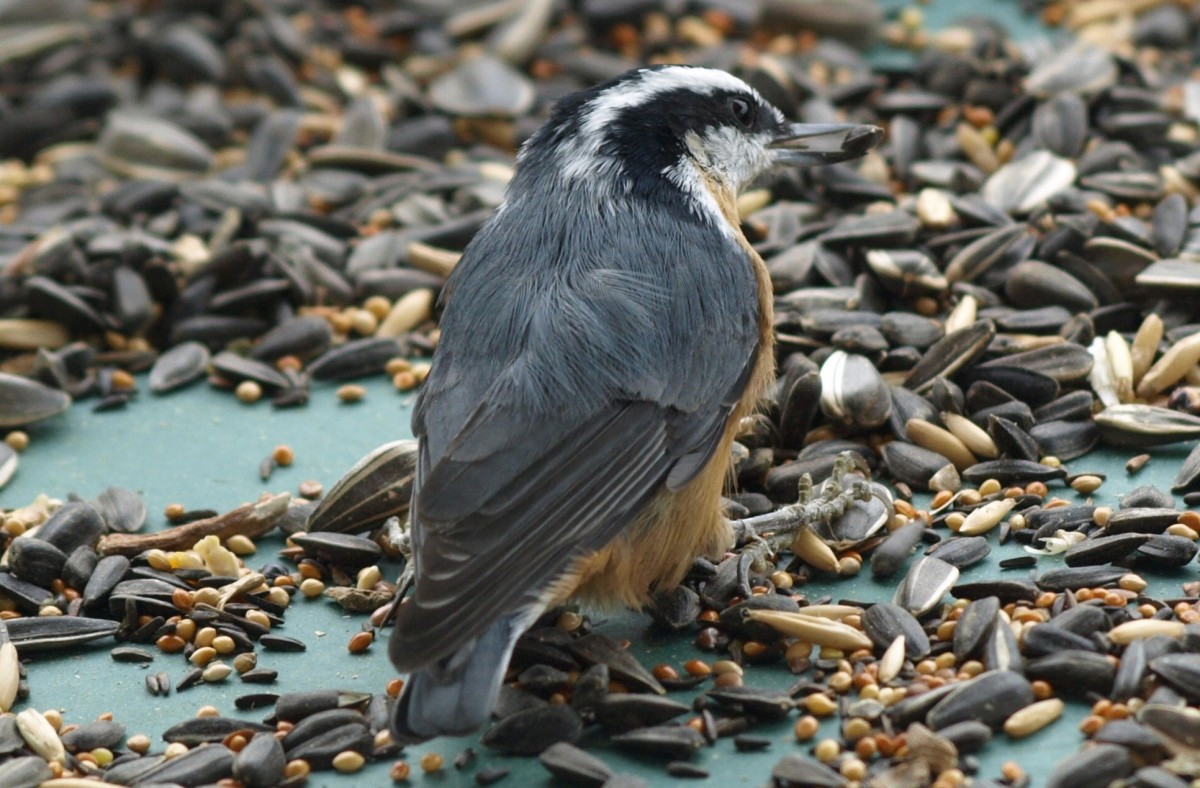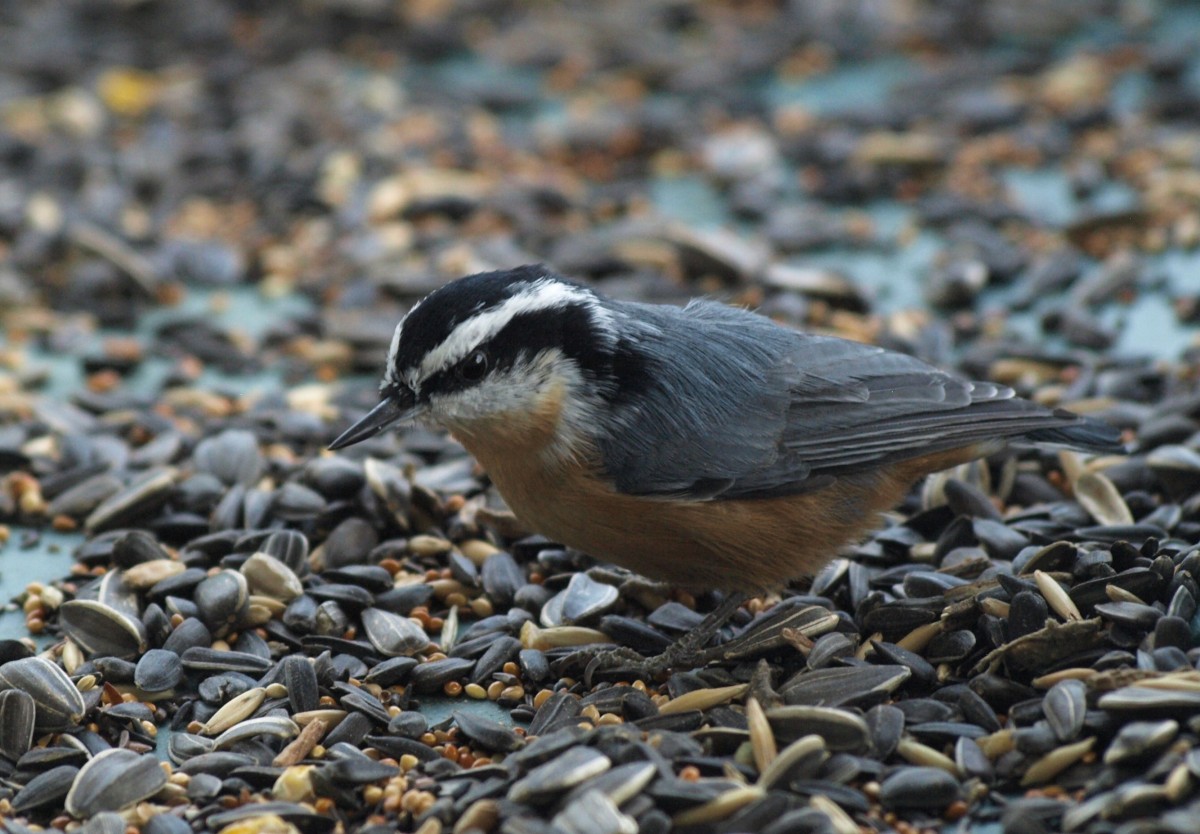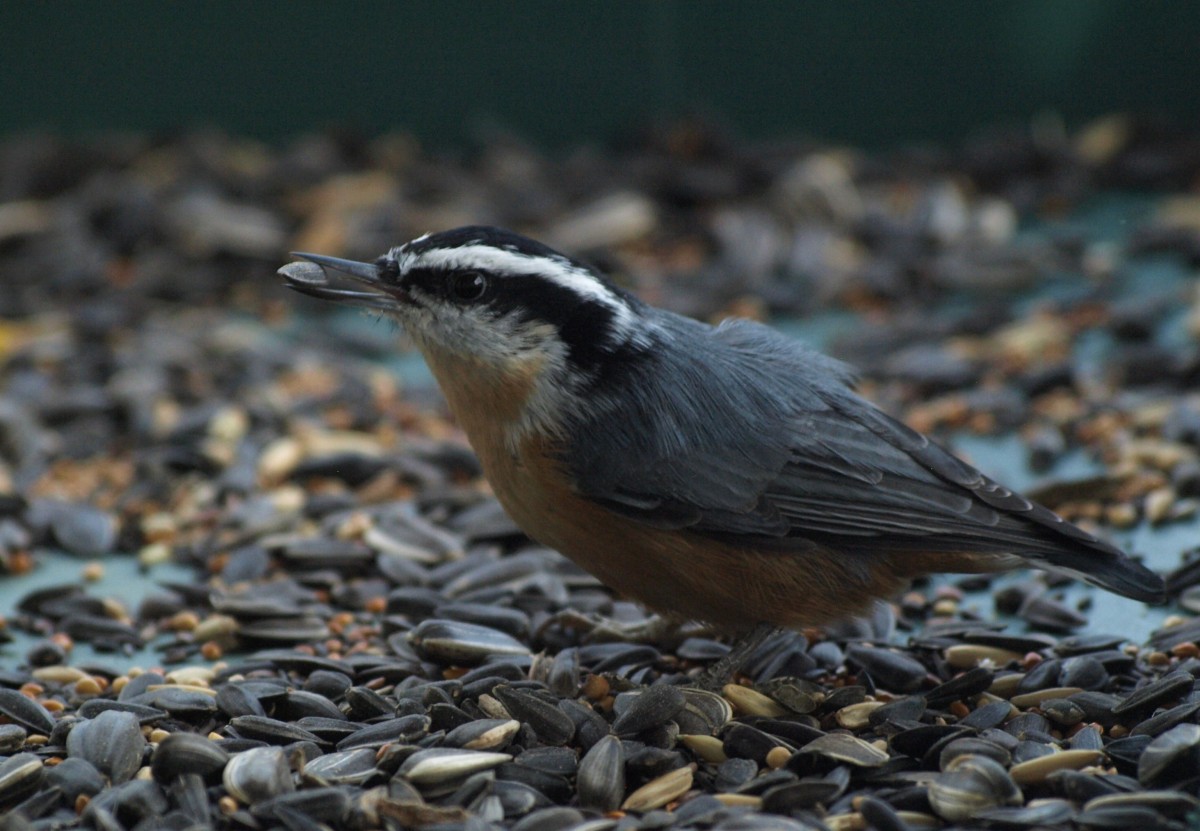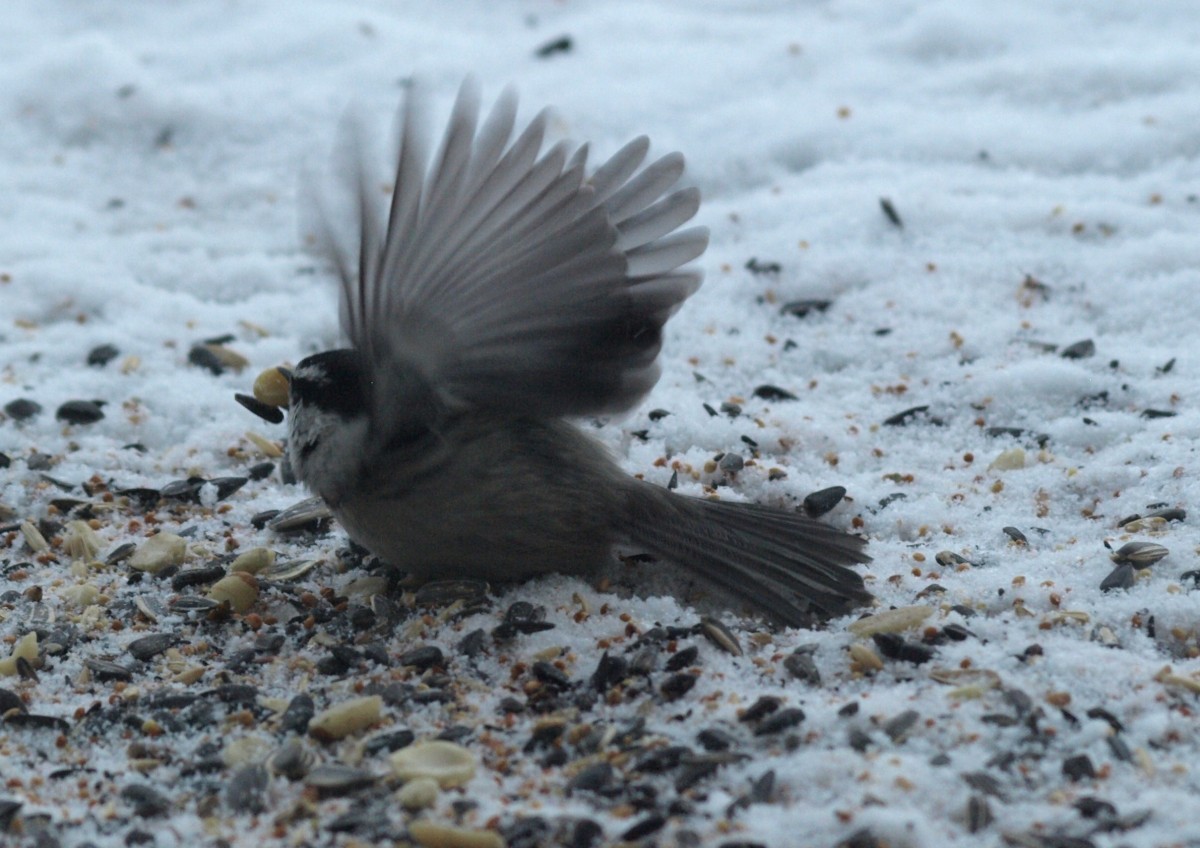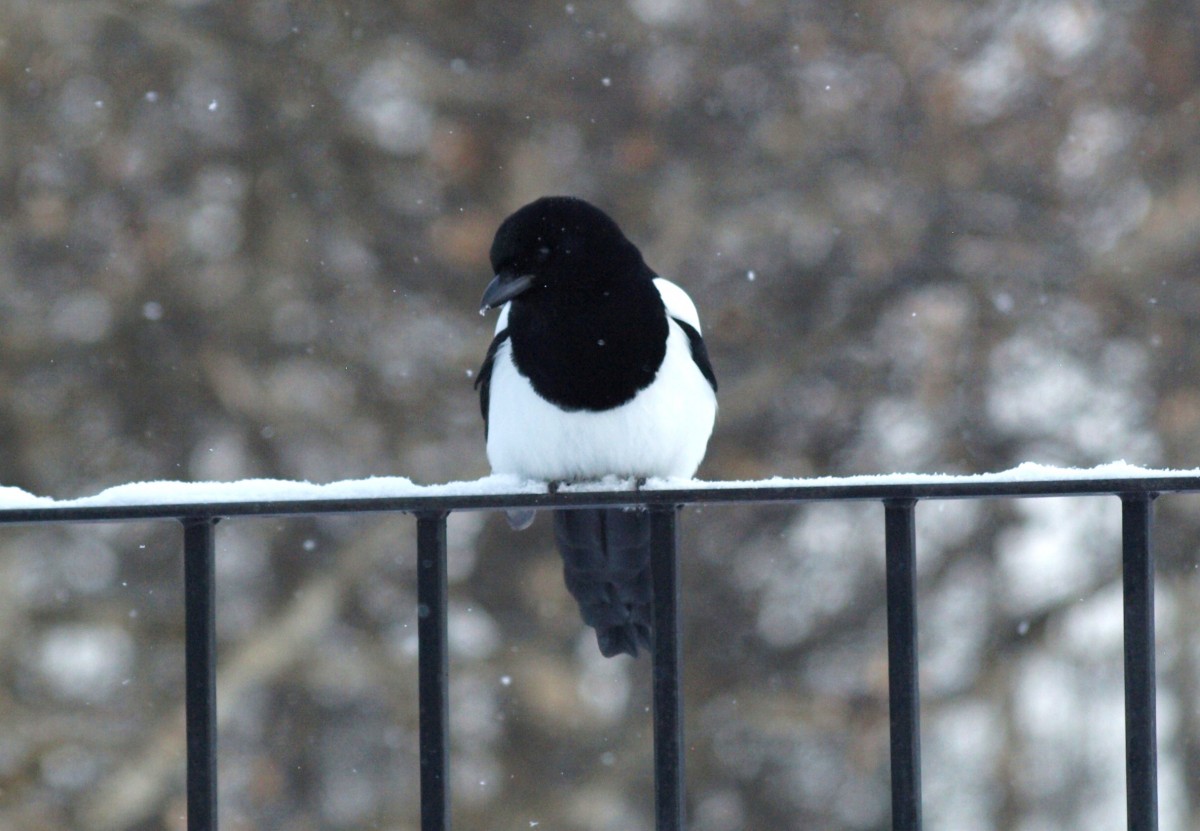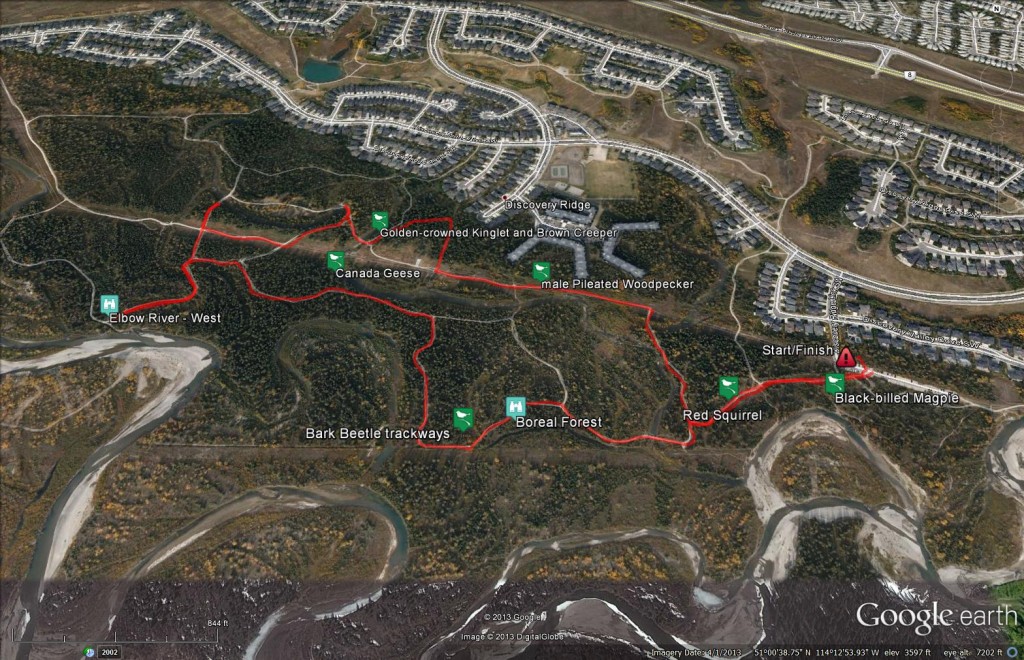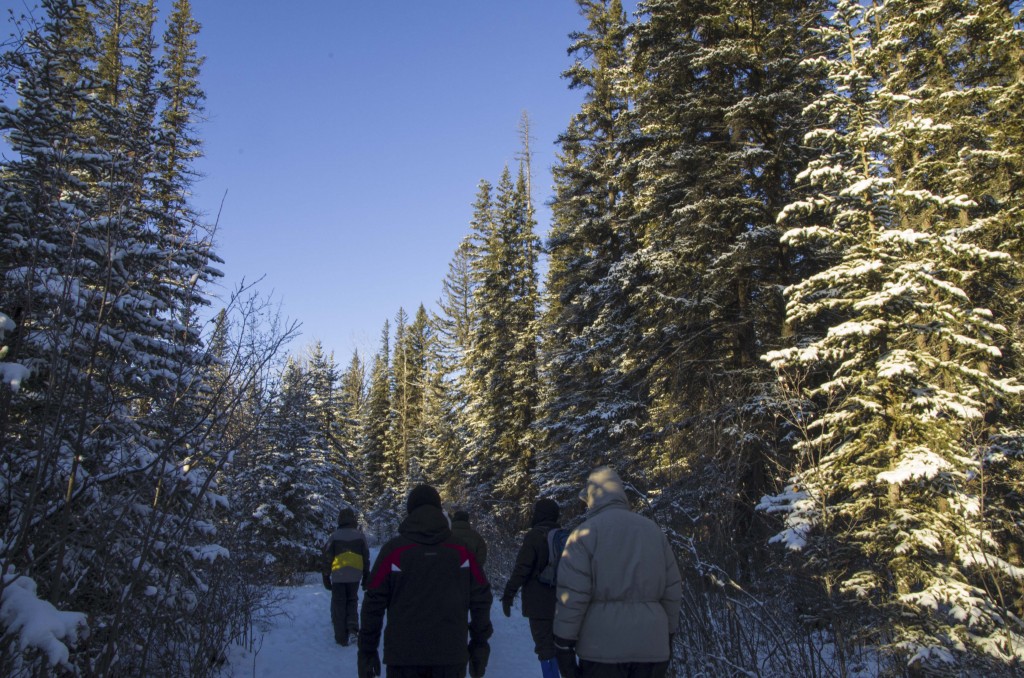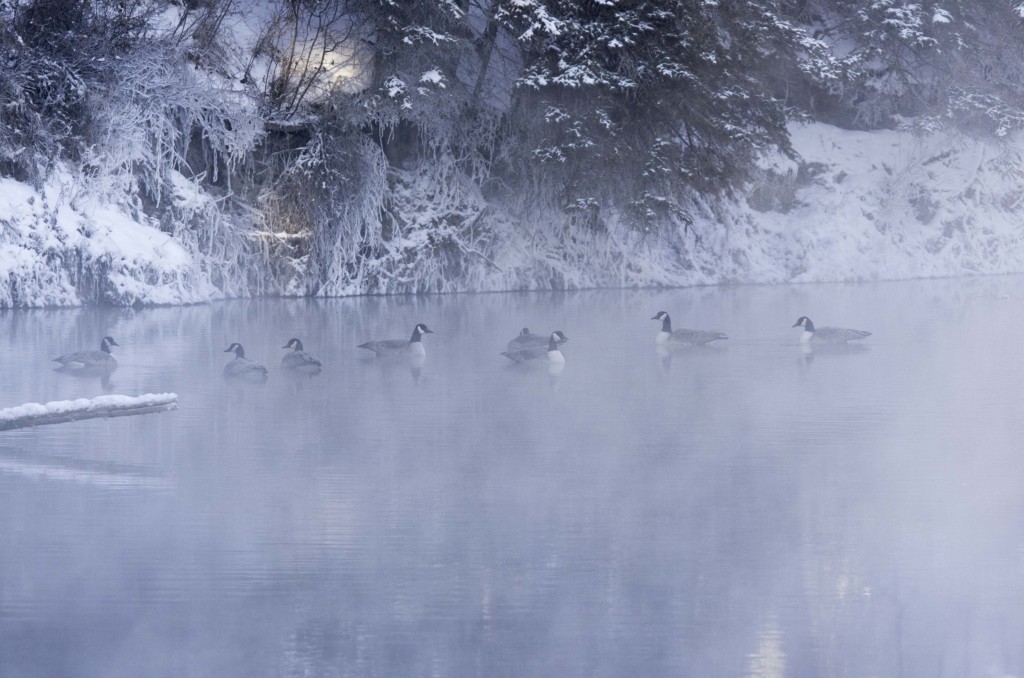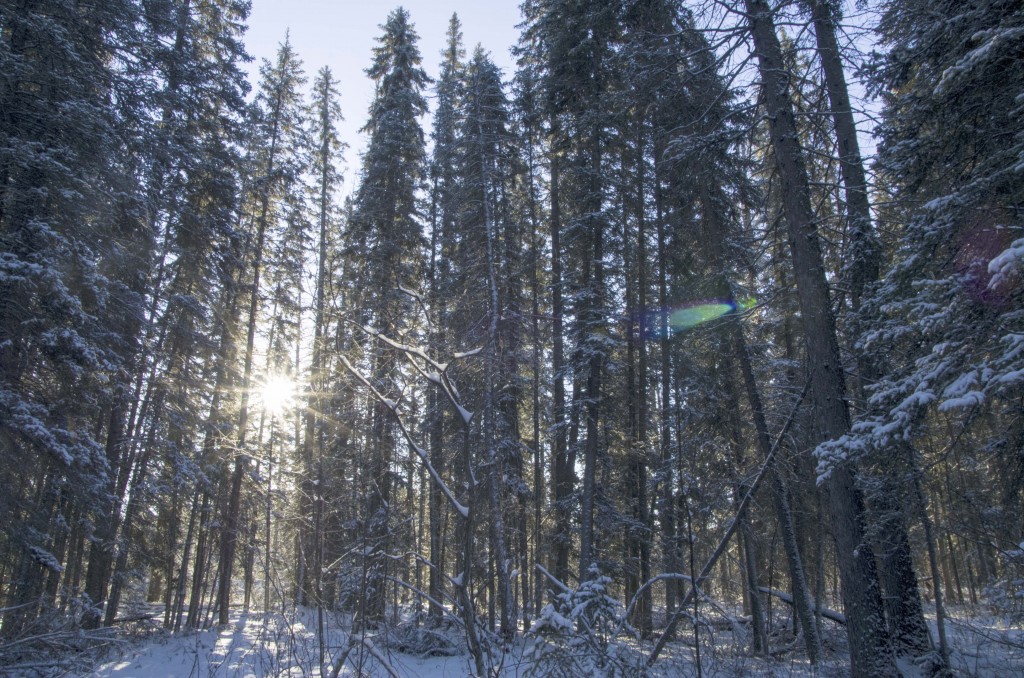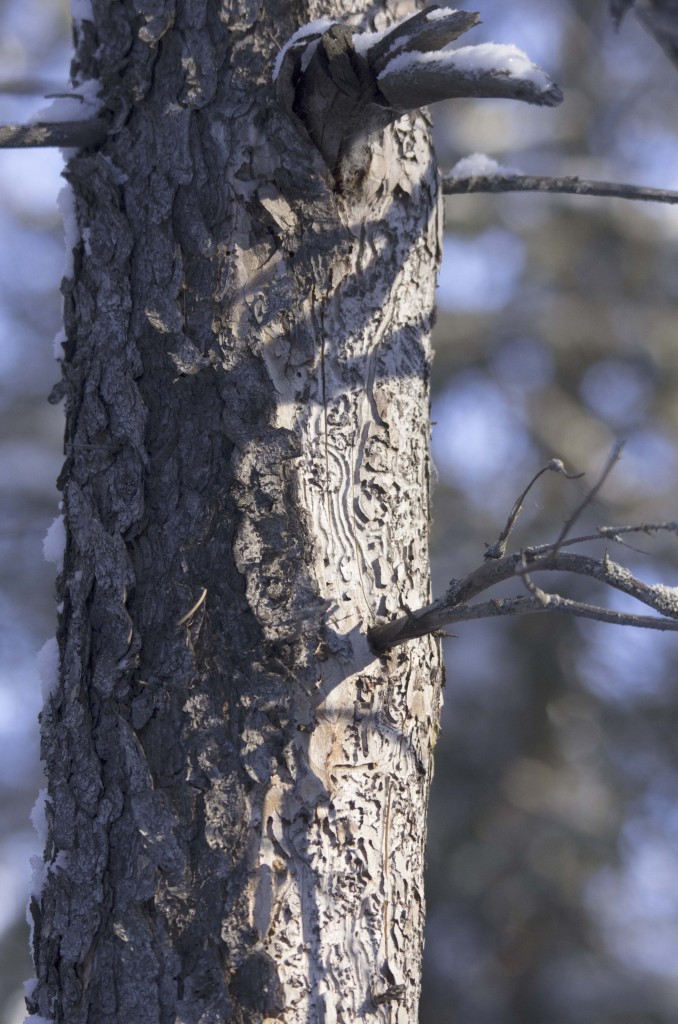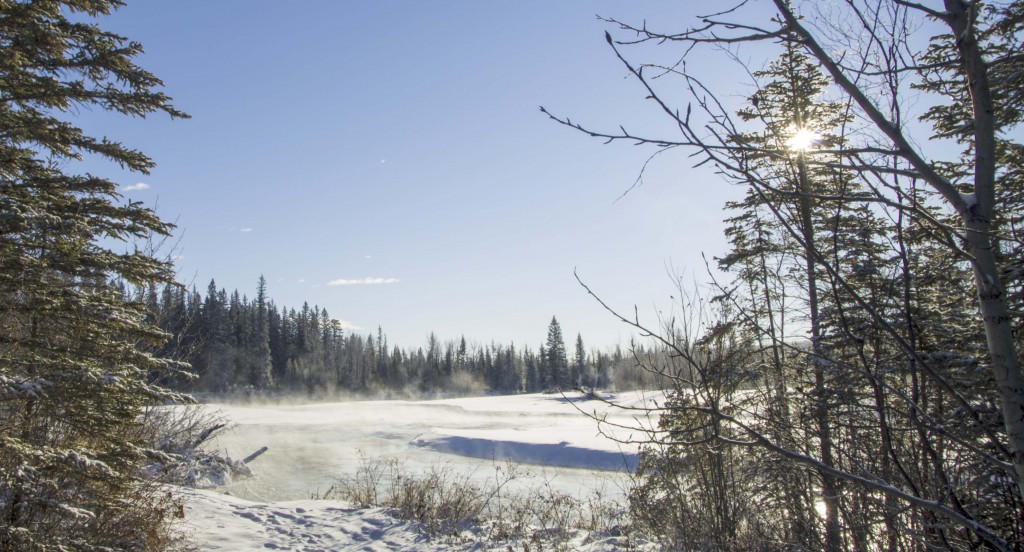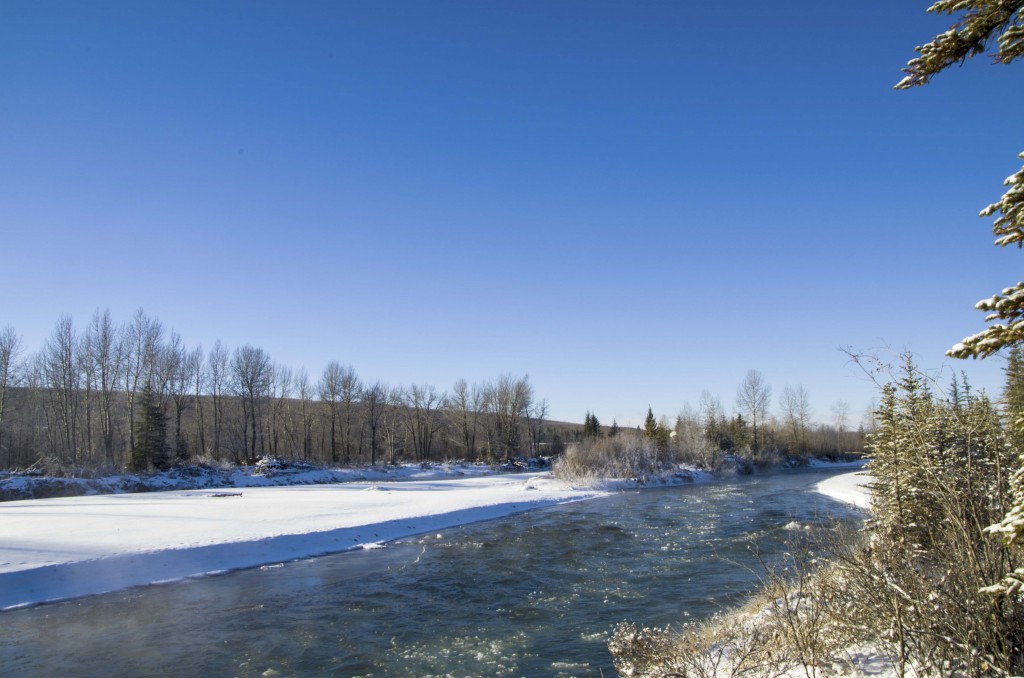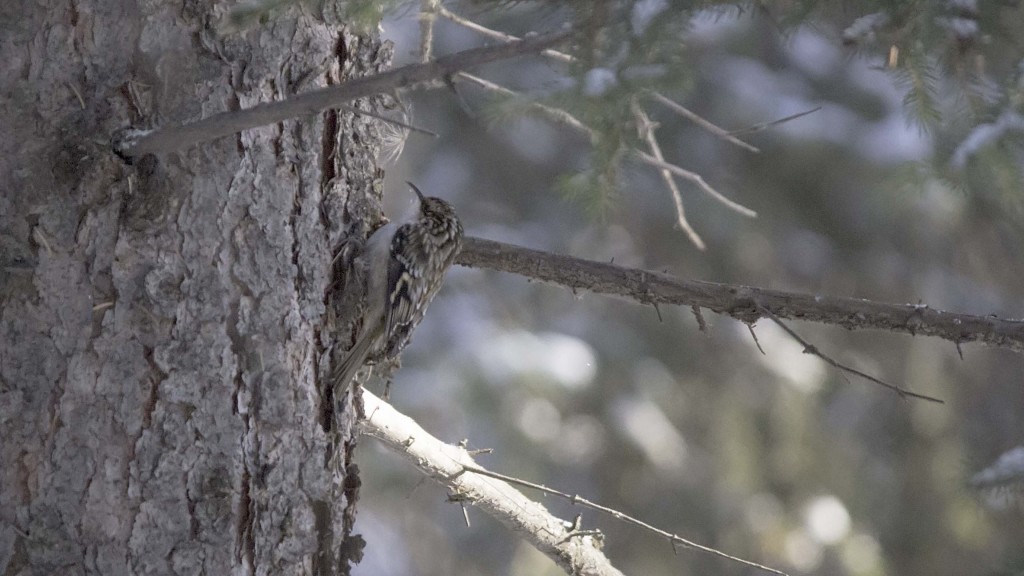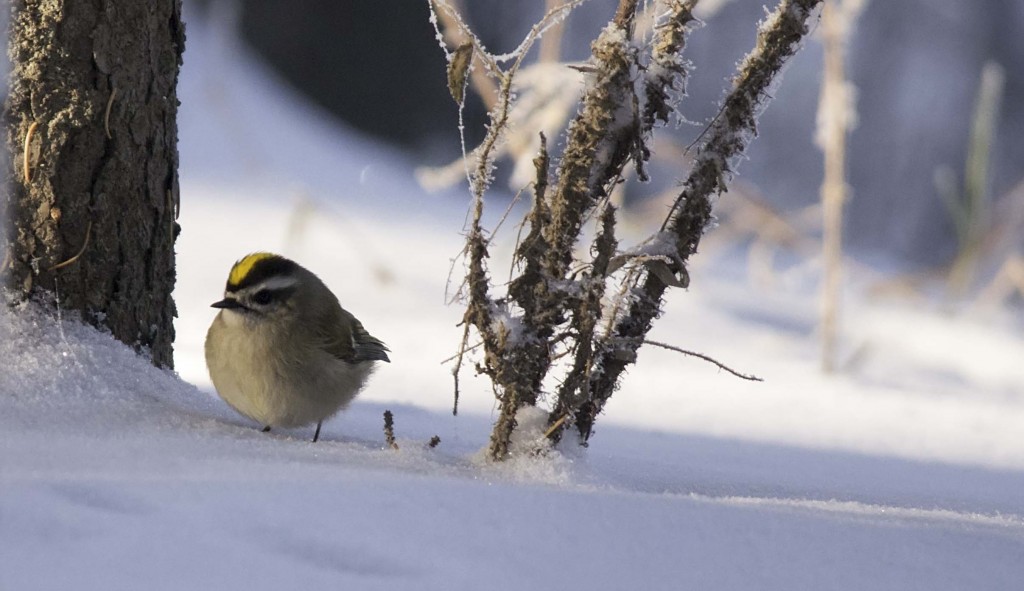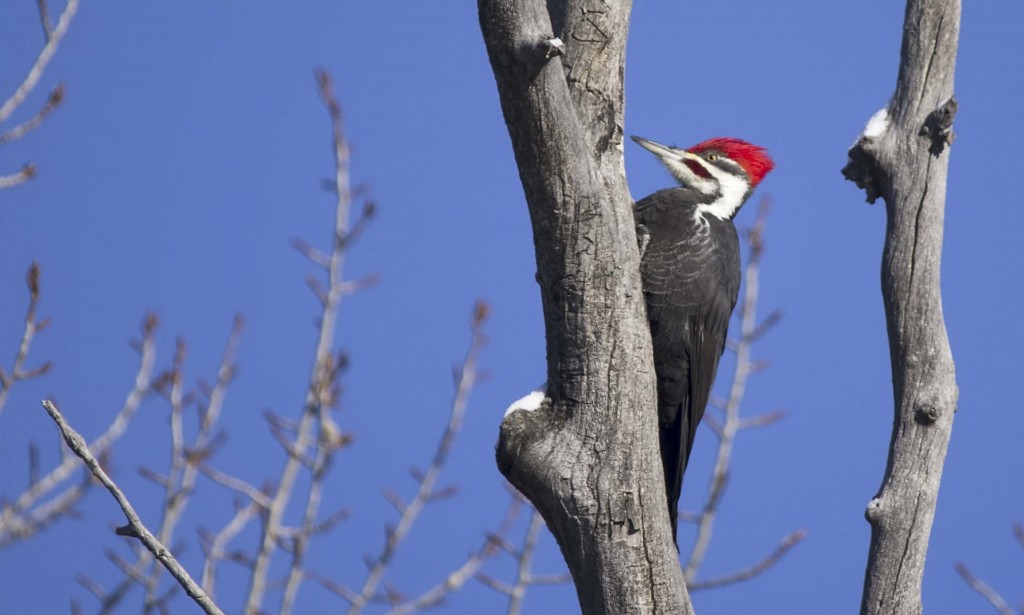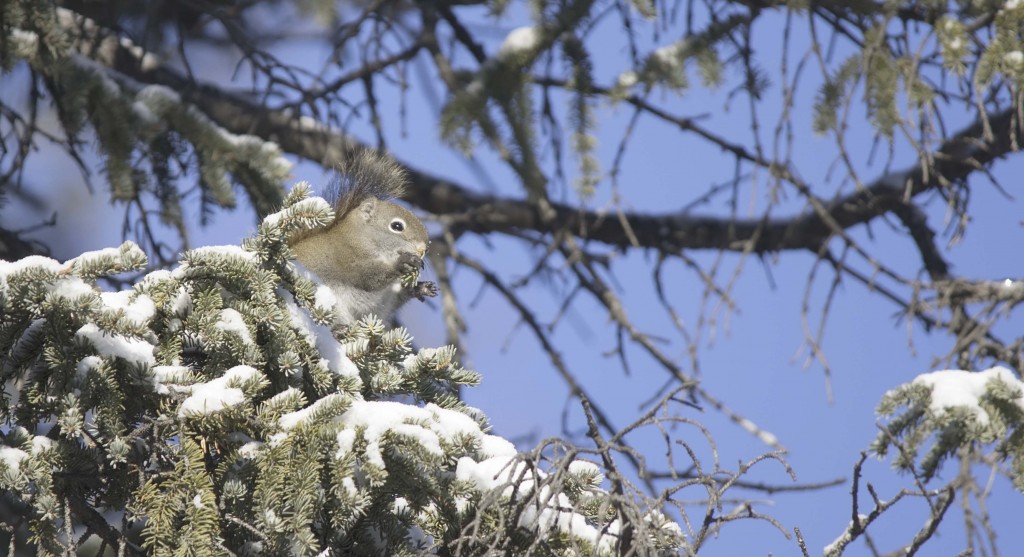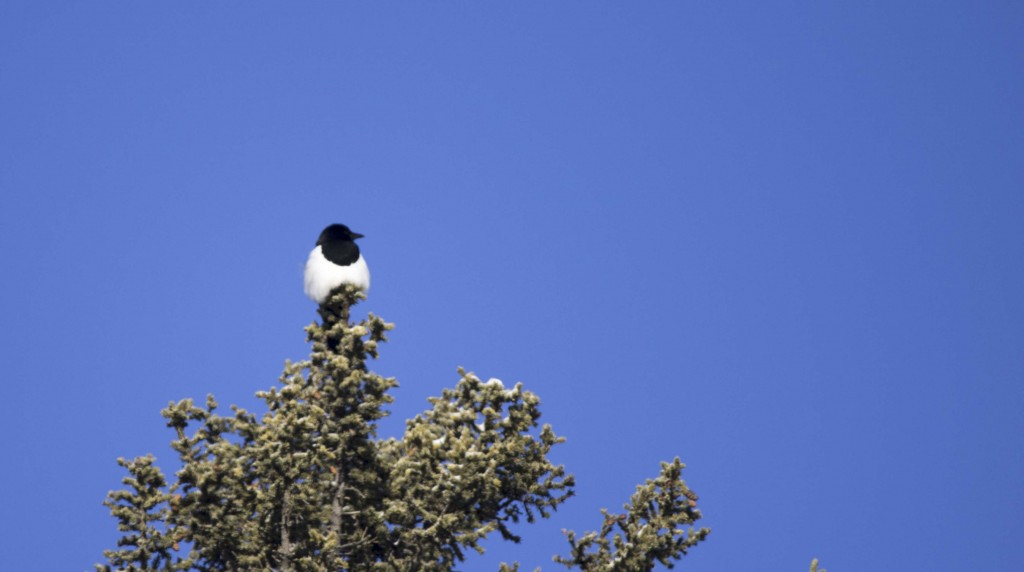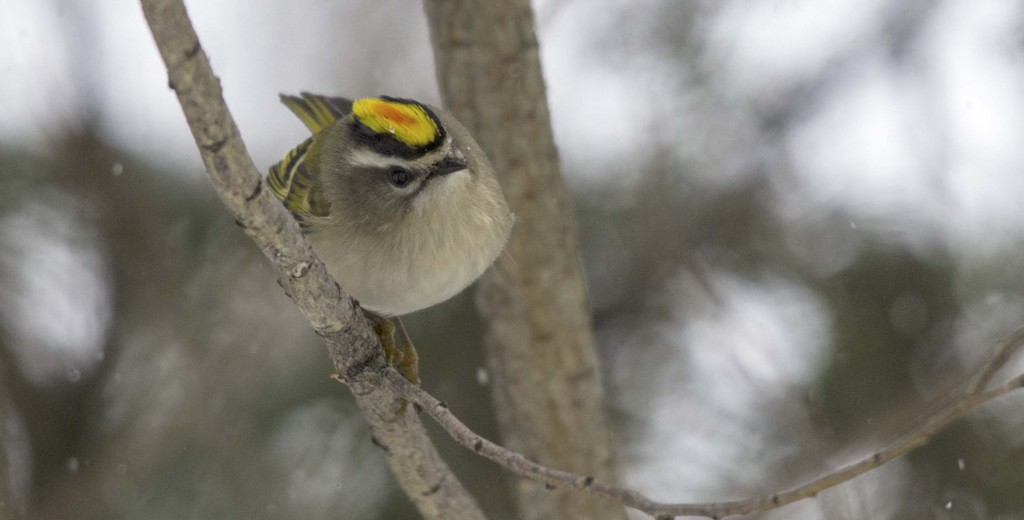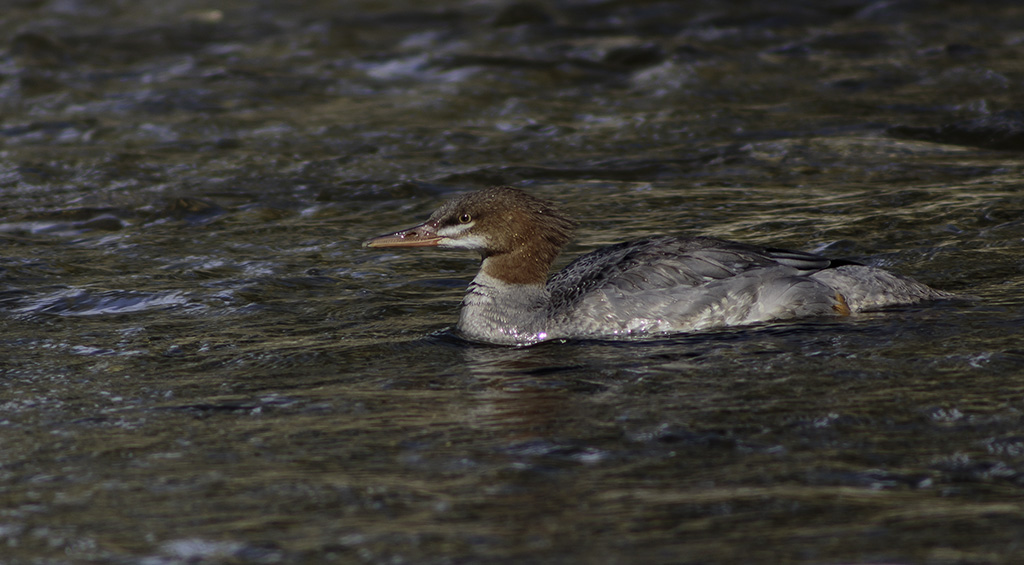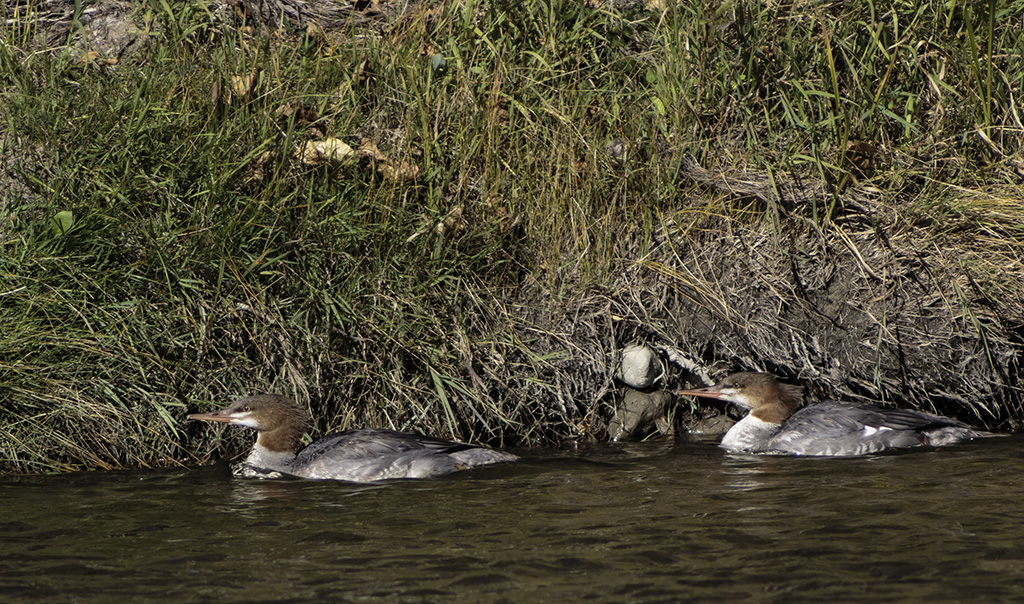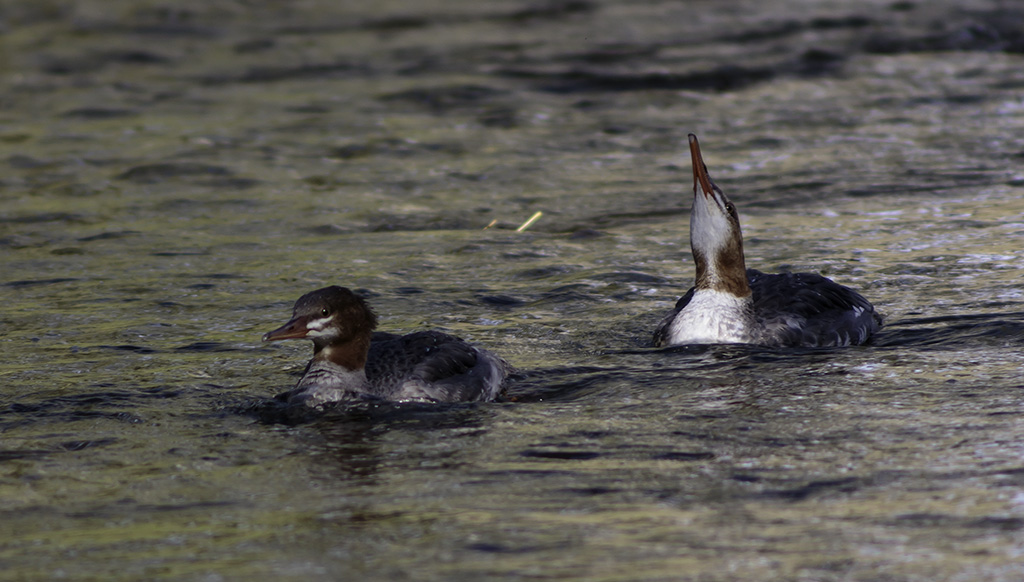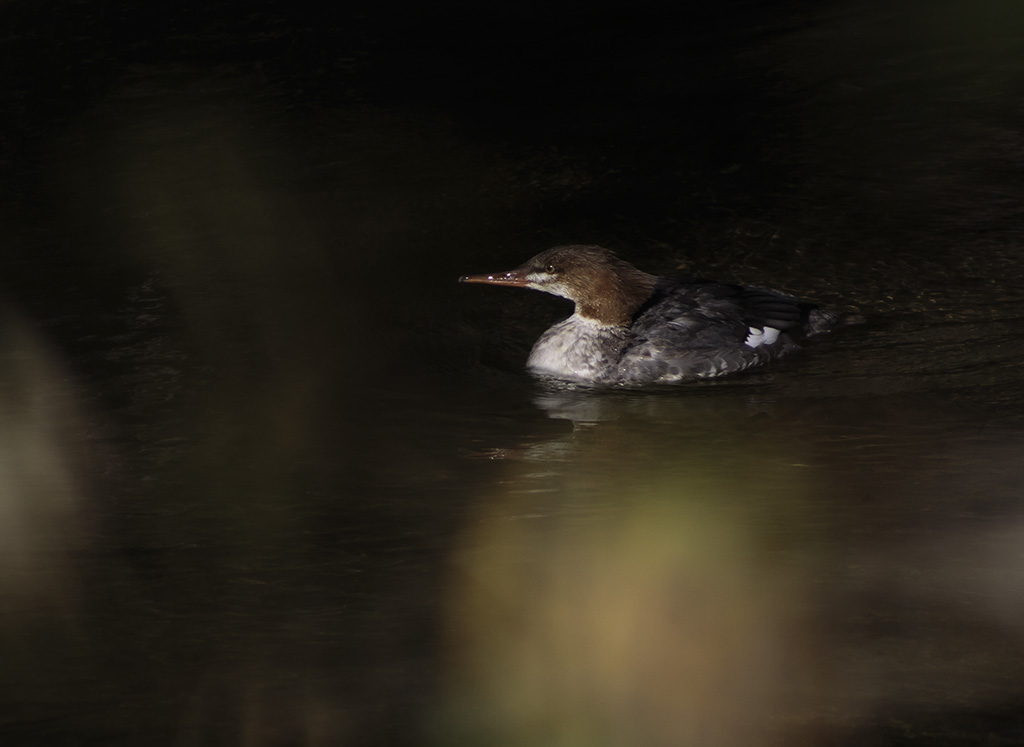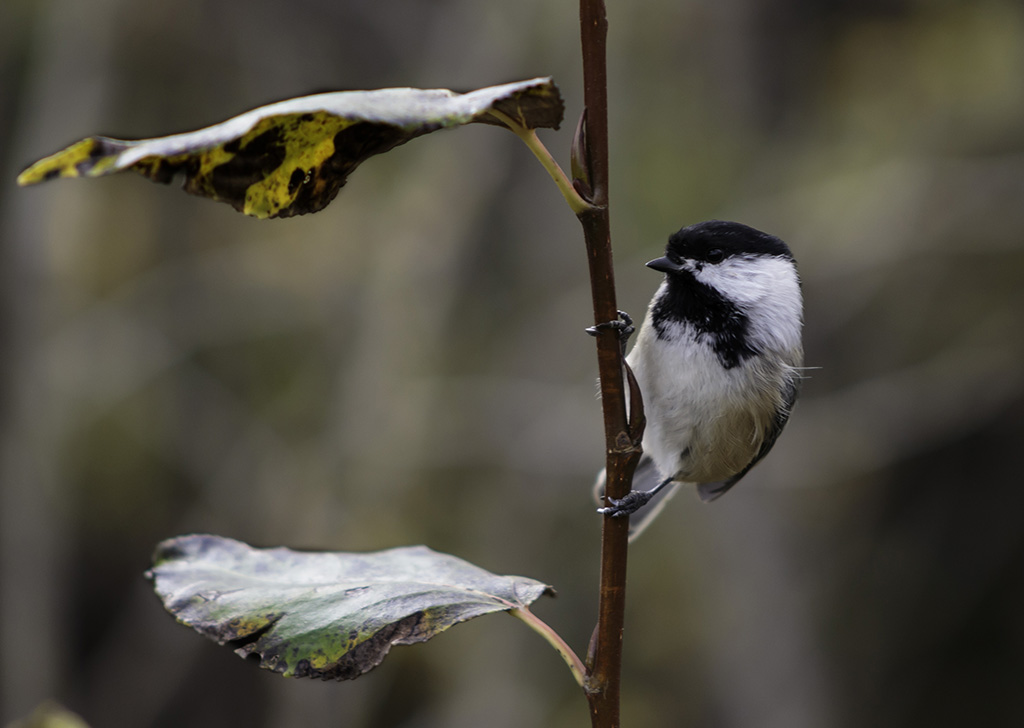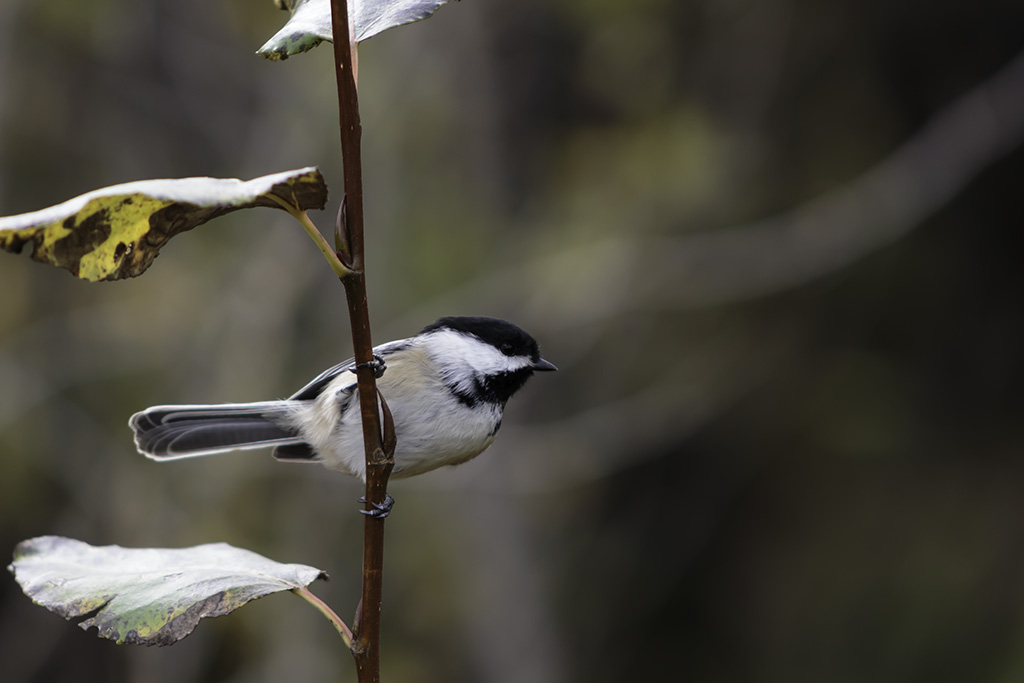Posted by Dan Arndt
Our second-to-last adventure for the Autumn Birding Course brings us back to Beaverdam Flats for the first time since the floods of June 2013. With both bridges washed out and still awaiting repair, we were confined to the upper pathway, and a return stroll lower down turned up most of the expected species, though once again we were entirely bereft of the many winter finches that were all too abundant last year. To top it off, the drop in the number of waterfowl from previous years was also astonishing. In the past, it wouldn’t be unheard of to see over twenty-thousand (yes, 20,000) individual birds along this stretch of river, while this year numbers barely crept up to the two-thousand mark.
On the bright side (pun totally intended), it wasn’t too long into our walk that the clouds broke up and allowed for some bright, beautiful blue skies overhead, and some very nice low angle sunlight to show off the brilliant iridescence of some of our more common waterfowl. The Mallards were courting, the Goldeneyes and Buffleheads were beginning to flock together, and even the geese seemed all-too-excited to put on a show.
This week we had a much different type of walk than our usual excursions. Only a handful of passerines were about for the most part, and the first real highlight of our morning was this flock of House Finches hanging out well above the bird feeders near the park.
As we walked along the upper ridge, flock after flock of both Mallards and Canada Geese flew in the distance, some coming in from elsewhere on the river, others flying off to the nearby fields to fill their bellies in preparation for another cold night. Our high vantage point didn’t really allow much in the way of close-ups, and it wasn’t until we descended the hill at the south end that we got right up close to the hundreds of birds on the river.
This male Common Merganser seemed to enjoy our company, as a few times along our walk he would fly in, feed for a bit, and drift downstream, only to fly back parallel to us again a few minutes later.

male Common Merganser putting on the brakes
Pentax K-5 + Sigma 150-500@500mm
1/640sec., ƒ/6.3, ISO 500
And then the clouds broke and the sun began to shine down on the river, showing off the amazing iridescence of the Buffleheads, Common Goldeneyes, and even our friendly male Common Merganser a little later on!
But that is not to say that there weren’t charismatic female birds close by as well! This female Common Goldeneye was one of a dozen or so that had us pausing and reviewing our field guides, considering what exactly the differences between a female Common and a Barrow’s Goldeneye were…
As we turned away from the river and headed back up the hill, we were given a great send off by a few large flocks of Canada Geese as a Bald Eagle flew in the distance, flushing them up off the river.
After we reached the top of the hillside again, we headed north, viewing the park itself, and while there weren’t too many birds to see, we surveyed what the park had suffered from the floods, and saw quite a bit of evidence of both human and animal activity down in the park, which we’ll be investigating in further detail next week. In proper fashion, we had a nice send-off from this Northern Flicker just before we turned to head back to the starting point, and back home for the day.
Have another great week, keep warm, and good birding!











